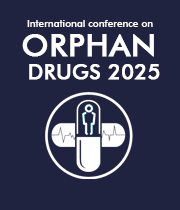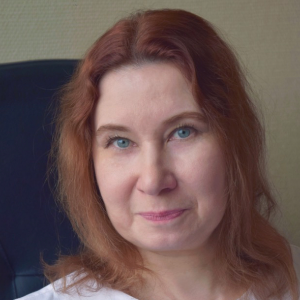Title : Rare forms of primary enzyme defects in monoamine biosynthesis: AADCD and TH-deficient progressive infantile encephalopathy
Abstract:
Neurotransmitter deficiencies are rare neurological disorders with clinical onset during childhood. Its classical signs are hypotonia, movement disorders, autonomous dysregulations, and impaired development. The clinical symptoms of inherited neurotransmitters disorders often overlap with features of other neurological syndromes. It’s particularly important to diagnose the diseases in this group early because of the good response to symptomatic therapy and the significant improvement in patient condition.
We present the case of 6-year old boy with a severe form of autosomal recessive segawa syndrome and the case of 1-year boy with aromatic l-amino acid decarboxylase deficiency (AADCD). Dna diagnostic was performed using full exome sequencing and was confirmed by sanger sequencing.
The boy with th-deficient progressive infantile encephalopathy had normal development before 3 months of age. At the age of 3 months he became weak, stopped holding his head and playing with toys. He had a tremor of the head, lethargy, the child's appetite deteriorated at the age of 6 months. He had severe motor development delay. He was able to control his head at 5 months, sit up straight at 18 months. He had severe hypokinesia, truncal hypotonia, dystonia, intellectual disability, ptosis, increased sweating and drooling. At the 32 month we start treatment with a low dose of l-dopa/Carbidopa (1/32 part of pill). The patient's condition improved immediately: Activity increased significantly, ptosis and salivation disappeared, at 34 months he walked independently. Now he has normal development and intelligence and going to enter school. He takes 1/3 Part of pill l-dopa/Carbidopa. He has a bit hyperactive.
Our second patient with AADCD had psychomotor development delay. At the age of 2.5 months his attacks began from episodes of movement of head and eyes up and to the side. Patient had marked delay in motor development, truncal hypotonia, dystonia, severe hypokinesia, ptosis, somnolence, increased sweating and drooling at the age of 10 months. We start treatment with high dose by pyridoxal-5-phosphate (100 mg/d). The condition of our patient improved in 24- 48 hours. He had less somnolence, ptosis of his eyelids decreased, he became more active. The therapy was continued by pramipexole 5 µg/kg/d and are planning to selegilinea by dose 0,1 mg/kg/d.
Brain MRI and EEG were normal in both patients.
We identified homozygous missense mutations c.1040G>A (p.Arg347Gln) In the ddc gene in first patient and c.1546G>A (P. Glu516Lys) In TH gene in second. The first one was previously described in the hgmd database. High concentration of 3-omd 1181.60 ng/ml is detected in dry blood spots in patient with AADCD (normal <305 ng/ml).
Clinical and genetic features were described in russian patients with aromatic l-amino acid decarboxylase deficiency due to ddc mutations and th-deficient progressive infantile encephalopathy due TH mutations. The case shows the first description with an effective therapy of pyridoxal-6-phosphate in the patient with AADCD in russia.


